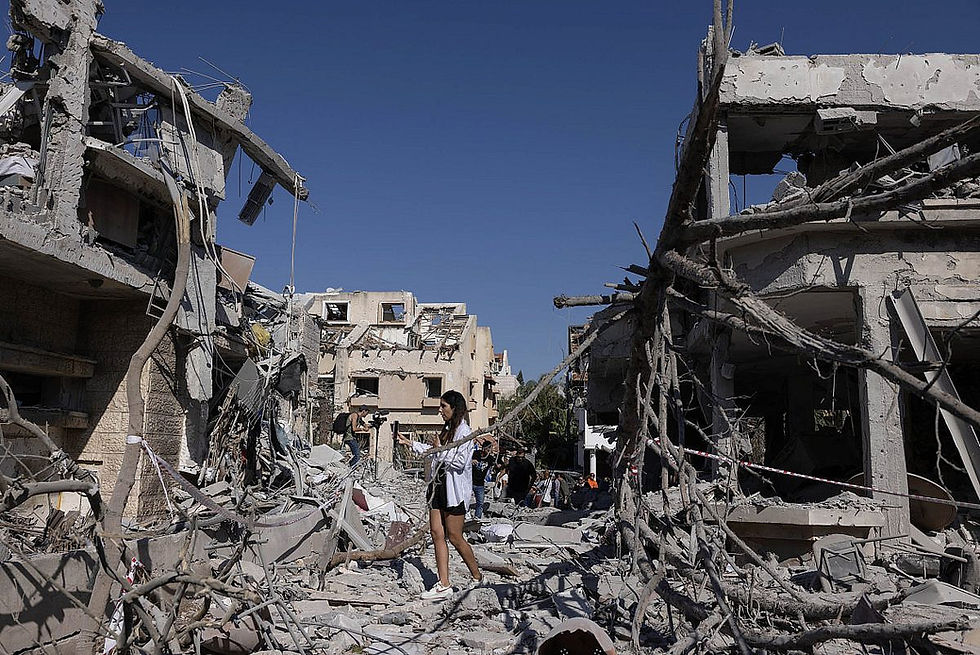Special Newsletter: Israel Strikes Iran
- rotemaoreg
- Jun 20
- 3 min read

What Happened
On June 13th, at approximately 3:00 AM local time, Israel launched a large-scale military operation (Operation A Rising Lion), targeting Iranian nuclear facilities, missile capabilities, and high-ranking officials.
IDF Chief of General Staff LTG Eyal Zamir, stated that we’ve reached a “push comes to shove” moment.
The operation conducted multi-wave airstrikes on roughly 100 targets across Iran, including Iran’s main uranium enrichment facility at Natanz, ballistic missile production sites, Russian-made aerial defense batteries, and military bases housing senior commanders.
These attacks were enabled due to a Mossad-activated secret drone base inside Iran, launching explosive drones to target ballistic missile launchers near Tehran.
In response, Iran launched over 100 drones toward Israel, though no ballistic missiles were reported at the time. Israel declared a nationwide state of emergency, activated warning sirens, and neutralized most incoming drones by noon (local time). In the week since the war started around 30 Israelis and over 200 Iranian were killed.
U.S. President Donald Trump now has a stronger negotiation position: he can offer Iran to force Israel to end the strikes in exchange for scaling back its nuclear program.
Why: Context of the Strikes in Iran
It is unclear whether these strikes will entirely dismantle Iran’s nuclear program, but Israeli leaders, such as IDF Chief of General Staff LTG Eyal Zamir, stated that we’ve reached a “push comes to shove” moment. Intelligence assessments from February 2025 indicated that Israel saw a narrowing window to halt Iran’s nuclear program due to Iran’s efforts to replenish its aerial defense capabilities after most were destroyed by Israel in October 2024.
The timing of the strikes coincides with stalled U.S.-Iran nuclear talks, which were set to resume in Oman on June 15, 2025. The U.S., under President Donald Trump, had been negotiating a new nuclear deal, offering sanctions relief in exchange for Iran halting uranium enrichment.
Israeli Prime Minister Benjamin Netanyahu, skeptical of diplomacy’s ability to prevent the nuclearization of Iran, was aiming to derail these talks, pushing a humiliated and vulnerable Iran into a harder stance.
Iran’s subsequent announcement that it would not participate in the scheduled talks suggests Israel’s strategy may have succeeded, at least in the short term; on the other hand, U.S. President Donald Trump now has a stronger negotiation position: he can offer Iran to force Israel to end the strikes in exchange for scaling back its nuclear program.
Within Israel, the decision to strike reflects not just strategic but also political imperatives: Netanyahu, facing an ongoing corruption trial and domestic unrest due to his failure to bring back the 53 hostages held in Gaza and his responsibility to the October 7 Massacre, has now fulfilled his decades-long aspiration to strike Iran, trying to reposition himself as the “protector of Israel.”
He hopes that the strikes will improve his image, especially in light of damaging polls and the probability of elections in early 2026.
What’s Next: Things to Watch in the Coming Days
The Israeli strikes on Iran mark a pivotal moment in the Middle East, and several factors - Iran’s response (especially if they attack U.S. assets or forces), the Trump administration’s approach, the public dynamics in Israel, and the global energy markets - will determine its results.
The one major factor that will determine the dynamic of the coming days is the BDA (Bombing Damage Assessment) - the more damage done to Iran’s military capabilities, the better Israel’s and the U.S.’s position to leverage the military achievements into diplomatic ones.
At the same time, it is crucial to remember that Israel is still engaged in an equally important fight in Gaza: to remove Hamas from power, which still poses a deadly threat to Israelis and stands in the way of peace in the region, and to bring back 53 Israeli hostages who are held by Hamas in inhumane conditions for 623 days.


Comments